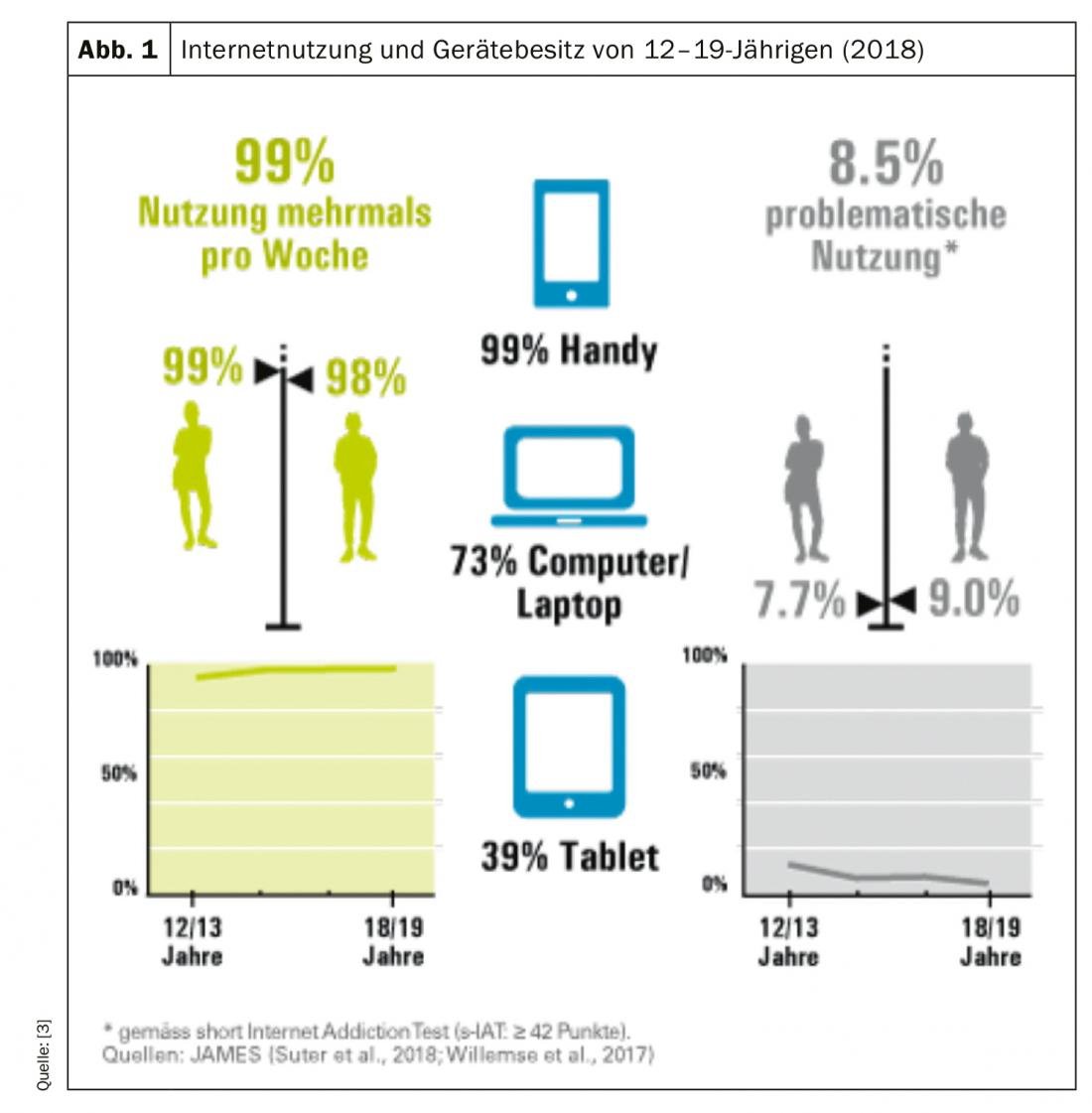The Internet is ubiquitous. Especially in the younger population, there is almost no one left who does not have access to the digital world. In the meantime, digitization is already affecting almost all areas of life. However, what in principle contributes to the globalization and interconnectedness of the world can have serious health and social consequences for some users.
Internet addiction is currently not (yet) a defined disorder. The World Health Organization (WH) has only recognized online gaming addiction as a separate disorder in the new catalog of diseases (ICD-11). Excessive computer gaming will thus be equated with other addictive disorders such as gambling addiction in the future. But what about those who don’t necessarily spend their time playing online games, but still have a problematic approach to the Internet? In Switzerland, it is currently estimated that 70,000 people have lost control of their Internet use. Another 300,000 affected persons maintain consumption behavior that is classified as problematic [1,2]. The group most affected is 15-19 year olds, almost all of whom own at least one Internet-enabled device (Fig. 1) [3].
Definition search
Since no universal criteria have yet been established, it is difficult to diagnose online addiction. According to the BAG, the generic term “problematic Internet use” covers all forms of problematic, addiction-like behavior with regard to the Internet. Specific areas of the Internet, such as gambling, pornography, online communication e.g. via social networks, online shopping or video games, are particularly affected. Patients struggle to disengage from the Internet and the center of their lives shifts from real life to virtual life [1]. There is no time left for everyday activities, social relationships suffer, work performance declines and there is a risk of debt. Likewise, health suffers.
Addiction monitoring as an indication
In the context of addiction monitoring, the CIUS (Compulsive Internet Use Scale) is used to identify problematic or symptomatic Internet use. 28 or more points are considered problematic Internet use, and 20 to 27 points are equated with symptomatic Internet use [4]. According to the study, the prevalence has remained stable at 1% since 2013 despite increased internet use. The two youngest age groups (15 to 19-year-olds and 20 to 24-year-olds) are predominantly affected. A significant increase (from 1.6% to 3.3%) was recorded among 20 to 24-year-olds. This trend could increase even further. This is because games of chance played on smartphones in particular are on the rise. From an addiction policy perspective, these should be viewed with concern, since they are available at any time and are used unthinkingly to pass the time.
Prevention writ large
According to the experts, prevention is and remains the most important measure against Internet addiction. Children should be introduced to the prudent use of digital media at an early age. However, parents need to be up to date with online applications themselves. And that is often not the case. In addition, the early signs of problematic online behavior must be recognized. These include disorders such as depression, social phobia, anxiety disorders, ADHD, trauma sequelae, and Asperger’s spectrum disorders, where there is presumably a large overlap with Internet-associated disorders [4].
Literature:
- www.bag.admin.ch/bag/de/home/gesund-leben/sucht-und-gesundheit/verhaltenssuechte/internetsucht.html (last accessed 03/16/2020)
- https://fachverbandsucht.ch/de/fachwissen/themen/onlinesucht (last accessed 03/16/2020)
- https://zahlen-fakten.suchtschweiz.ch/de/digitale_welt.html (last accessed 03/16/2020)
- https://fachverbandsucht.ch/download/597/180419_Bericht_Expertengruppe_Onlinesucht_de__def_OhneAnhang.pdf (last accessed 03/16/2020)
InFo NEUROLOGY & PSYCHIATRY 2020; 18(2): 20.












